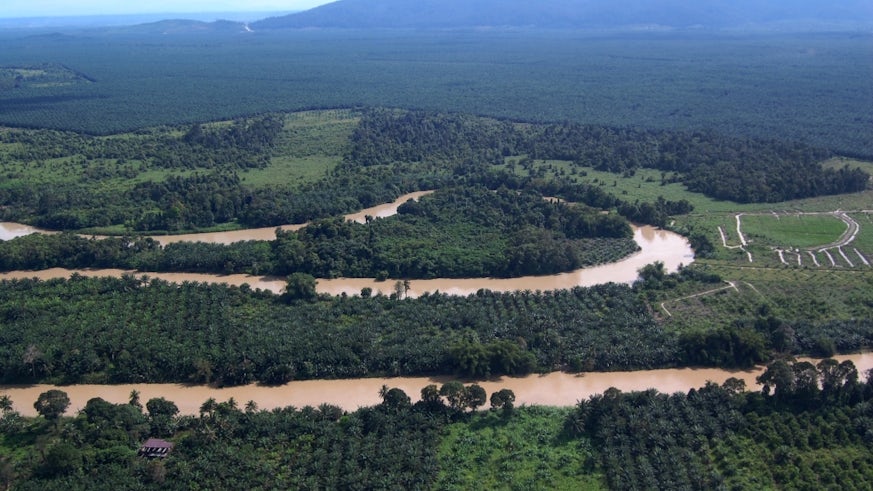Riverbank forest buffers could increase yields from oil palm plantations
23 August 2018

Preserving tropical forest buffers along the banks of large rivers could improve the long-term viability of oil palm plantations while maintaining conservation benefits. This is the finding of a new study by Cardiff University School of Biosciences, Cardiff University School of Earth and Environmental Sciences, and Danau Girang Field Centre in Sabah, Malaysia.
Tropical meandering rivers and their floodplains provide habitats to many of the planet's critically endangered species, but they are now being threatened by recently intensified rates of deforestation driven by global demands for food and biofuels.
Using numerical modelling, the team of researchers from Cardiff University and Danau Girang Field Centre, discovered that preserving forest buffers of tens of metres along the margins of large meandering rivers can increase the viability of floodplain plantations and maintain conservation benefits by limiting the area of land lost to bank erosion.
While the benefits of this approach for oil palm plantations are most evident in long-term economic projections, they also hold true for shorter time scales.
“By reducing initial planting expenditure and safeguarding young palms from being lost to erosion before they generate revenue, riparian buffers have the potential to increase the short-term profitability of newly established plantations,” explains Dr Alexander Horton from Cardiff University School of Earth and Environmental Sciences.
The findings of this study could help to align palm oil industry goals with environmental conservation, and Dr Benoit Goossens of Danau Girang Field Centre and the School of Biosciences is hopeful that the results will be considered by organisations across the industry.
“We strongly suggest that oil palm plantations set aside riparian forest buffers of at least 100 metres wide along large rivers such as Kinabatangan, Segama, Paitan, Sugut, Kalumpang, Serudong and Silabukan; and we hope that the results of this research will be considered by RSPO and oil palm companies in Sabah and in the rest of the world.”
Can Riparian Forest Buffers Increase Yields From Oil Palm Plantations? was published in Earth’s Future.

